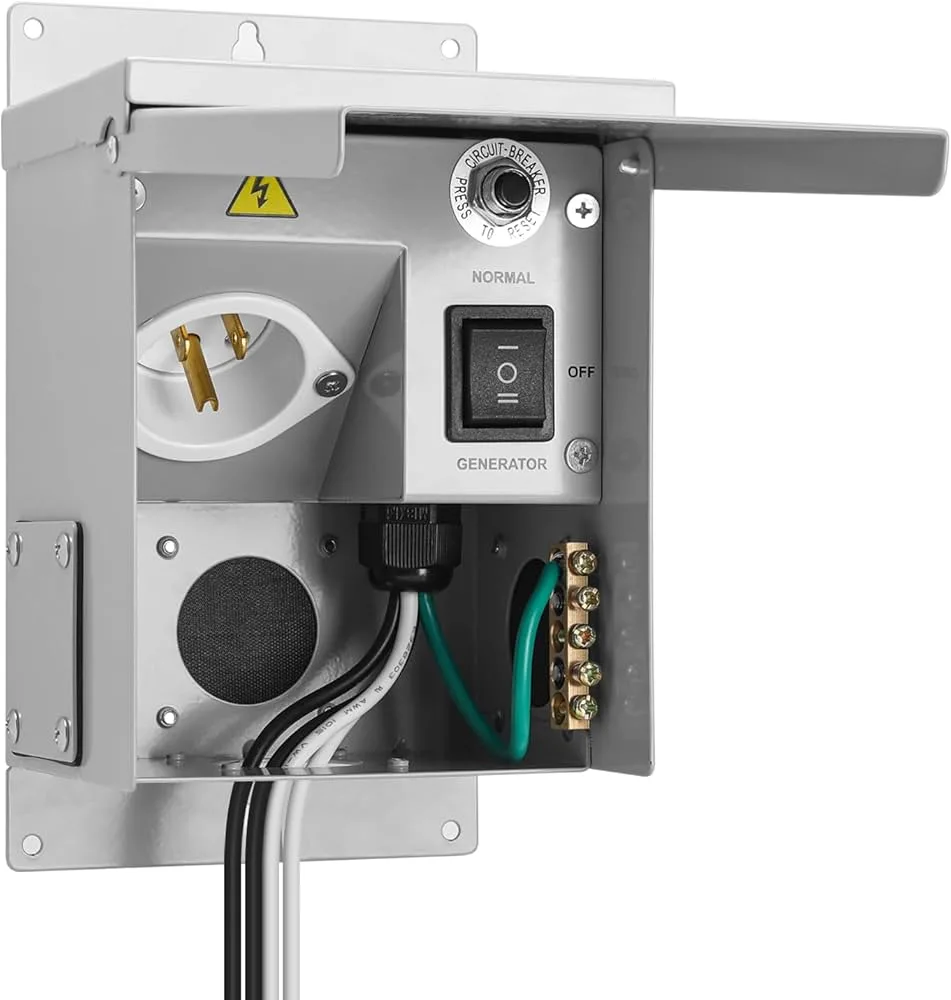In addition to the ATS, several other switches or components influence voltage control in generator systems. Each serves a specific purpose, and their relevance depends on the generator’s application (e.g., industrial, residential, or portable setups):
- Automatic Transfer Switch (ATS)
- Function: Automatically detects utility power loss, switches the load to the generator, and monitors voltage/frequency to ensure stable power delivery. It switches back to utility power when restored.
- Voltage Role: Regulates and stabilizes voltage during transitions, preventing spikes or drops that could damage equipment.
- Use Case: Common in hospitals, data centers, and industrial facilities where uninterrupted power is critical.
- Example Issue: Controller failures or wiring issues can disrupt voltage monitoring, as noted in recent operator reports.
- Prevalence: The most widely used voltage switch in modern generator systems due to its automation and reliability.
- Manual Transfer Switch (MTS)
- Function: Requires manual intervention to switch between utility and generator power, unlike the ATS. Operators physically toggle the switch to change power sources.
- Voltage Role: Does not actively monitor voltage but ensures the load is connected to a stable power source when manually switched.
- Use Case: Found in smaller setups, such as residential or small commercial applications, where automation is not required or cost is a concern.
- Example Issue: Improper switching can cause voltage instability if not aligned with the generator’s output.
- Prevalence: Less common in critical applications but still relevant for budget-conscious or simpler systems.
- Voltage Selector Switch
- Function: Allows the operator to select the output voltage of the generator (e.g., 120V, 240V, or 480V) to match the load requirements, typically found on portable or multi-voltage generators.
- Voltage Role: Directly adjusts the generator’s output voltage to ensure compatibility with connected equipment.
- Use Case: Common in portable generators or construction sites where equipment may require different voltages.
- Example Issue: Incorrect voltage selection can lead to under- or over-voltage, damaging equipment or causing the generator to fail.
- Prevalence: Specific to generators with variable voltage outputs, less common in fixed industrial systems.
- Circuit Breakers
- Function: Protects the generator and connected loads by interrupting power flow during overcurrent or fault conditions, indirectly managing voltage stability.
- Voltage Role: Prevents voltage spikes or drops caused by electrical faults by cutting off the circuit when abnormalities are detected.
- Use Case: Universal in all generator systems as a safety mechanism, often integrated with ATS or MTS.
- Example Issue: A tripped breaker due to an overload can halt power delivery, mimicking a voltage switch failure.
- Prevalence: Standard across all generator systems but not primarily considered a “voltage switch” in the same sense as ATS or MTS.

Comparison of Switches
| Switch Type | Automation | Voltage Monitoring | Primary Use Case | Common Issues |
|---|---|---|---|---|
| Automatic Transfer Switch (ATS) | Yes | Yes | Critical applications (hospitals, data centers) | Controller failures, wiring issues |
| Manual Transfer Switch (MTS) | No | No | Residential, small commercial | Operator errors, improper switching |
| Voltage Selector Switch | Manual | No | Portable/multi-voltage generators | Incorrect voltage settings |
| Circuit Breaker | Automatic | Indirect | All generator systems | Tripping due to overloads or faults |
Why the ATS is the Main Voltage Switch
The ATS is considered the primary voltage switch in most generator systems for several reasons:
- Automation: It operates without human intervention, making it ideal for critical systems where immediate power transfer is essential.
- Voltage Regulation: It actively monitors and stabilizes voltage, ensuring safe transitions between power sources.
- Prevalence in Critical Systems: ATS is standard in industrial and commercial settings, where reliability is paramount, unlike MTS or voltage selector switches, which are more common in simpler or portable setups.
- Industry Focus: Recent operator complaints highlight ATS issues like controller failures and wiring problems as major causes of voltage disruptions, underscoring its critical role
